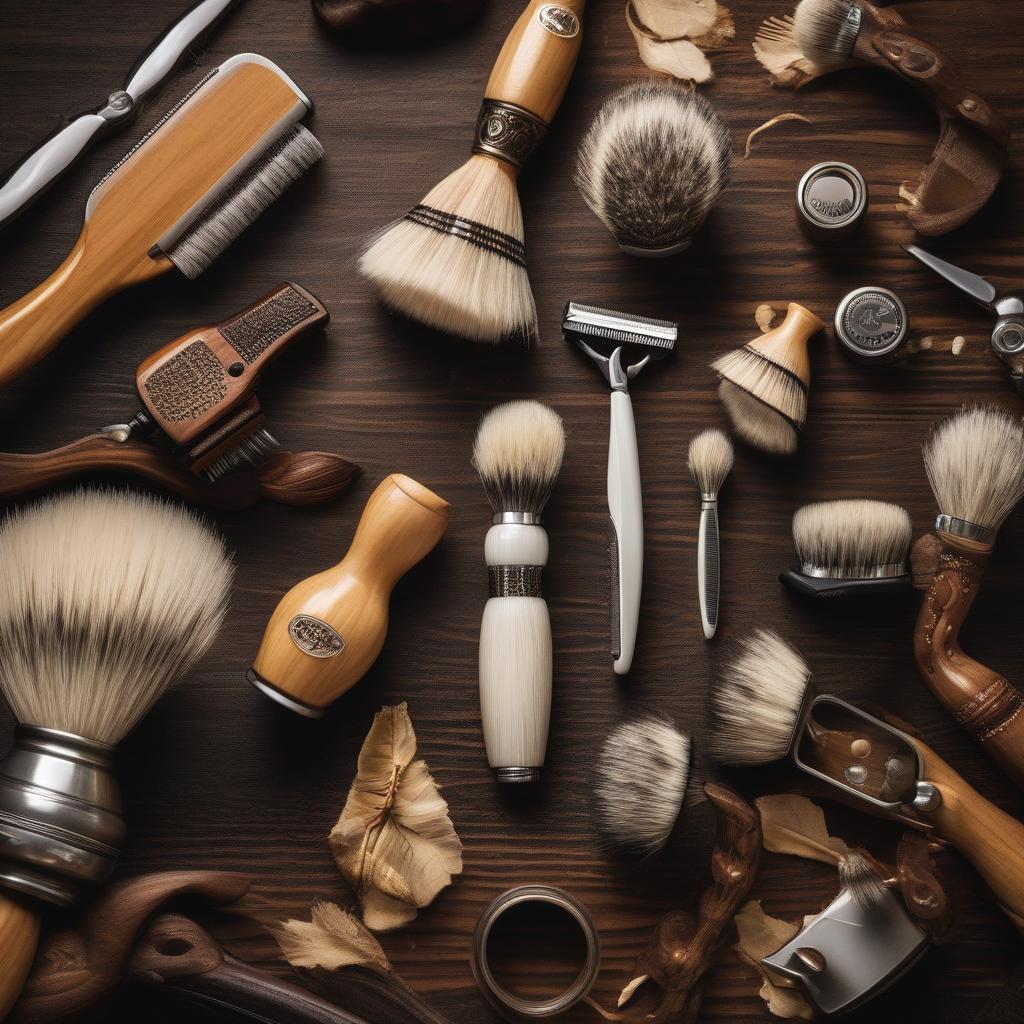
Cultural Significance: Different Cultural Practices and Norms in Shaving
Shaving is a ubiquitous practice that transcends cultures and societies, each imprinting its unique customs, rituals, and significance upon the act. Throughout history and across the globe, shaving has been more than just a means of personal grooming; it has held profound cultural, religious, and societal implications. In this blog post, we will explore the various cultural practices and norms associated with shaving, delving into the reasons behind these practices and their evolution over time.
Shaving in Ancient Cultures
Ancient Egypt
In Ancient Egypt, shaving was an essential aspect of cleanliness and hygiene. Most Egyptians, irrespective of gender, shaved their heads and bodies to ward off lice, parasites, and to cope with the hot climate. A clean-shaven appearance was also seen as a mark of social status and nobility. Rich Egyptians often had personal barbers and used copper and bronze razors, whereas body shaving was accomplished using pumice stones.
One of the most intriguing practices was the shaving of priests. Egyptian priests went to great lengths to maintain absolute cleanliness and often shaved their entire bodies, including eyebrows and eyelashes, as a sign of ritual purity.
Ancient Greece
The ancient Greeks had an ambivalent relationship with shaving. While beards were initially considered symbols of wisdom and virility, a significant cultural shift occurred during the era of Alexander the Great. Alexander, aiming to prevent enemies from grabbing his soldiers by their beards in battle, encouraged his troops to shave. This military requirement propagated a style trend, making the clean-shaven look popular among Greek men.
Ancient Rome
Romans, influenced by Greek customs, highly valued a clean-shaven face as a mark of civilization and refinement. Young Roman men experienced their first shave in a ritual called “tonso,” which was considered a rite of passage into adulthood. During this time, public barbershops, or “tonstrina,” became hubs of social interaction, where men gathered not just for grooming but also to discuss politics and daily life.
Religious and Ritualistic Significance
Hinduism
In Hindu culture, shaving holds significant religious value, especially in rituals and rites of passage. Mundan, or the first shaving of a child’s head, is a crucial samskara (rite of purification) observed during infancy. This practice is believed to purify the child and rid them of any negativity from past lives. Additionally, Hindu monks and ascetics often shave their heads as a symbol of renunciation and devotion.
Buddhism
Similar to Hinduism, Buddhism emphasizes the practice of shaving as a sign of renouncing worldly attachments. Monks and nuns shave their heads upon ordination, symbolizing their commitment to the monastic life and detachment from material concerns.
Islam
In Islam, personal grooming, including shaving, is considered a form of purification and cleanliness (tahara). The Prophet Muhammad encouraged his followers to maintain a well-groomed appearance, which included trimming moustaches and shaving armpit and pubic hair. However, growing a beard is highly recommended for Muslim men, and many adherents consider it a sign of piety and respect for the Prophet.
Shaving Practices in Modern Cultures
Western Societies
In Western cultures, notions of grooming and aesthetics have seen significant changes over the centuries. In the early 20th century, the invention and mass production of safety razors by King Camp Gillette democratized shaving, making it accessible to the general public. This period also saw a clean-shaven face become a standard of professional grooming for men.
The influence of media and advertising further amplified these norms. Clean-shaven faces were associated with success and respectability, while the rise of cinema and advertising promoted smooth, hairless skin for women.
Middle Eastern and South Asian Cultures
In the Middle East and South Asia, beard grooming remains intertwined with cultural and religious practices. Beards are often seen as symbols of wisdom, dignity, and religious adherence. However, modern urban influences and global trends have introduced more varied grooming preferences, with younger generations adopting styles influenced by Western fashion.
Indigenous and Tribal Cultures
Among many indigenous and tribal cultures, shaving and hair grooming practices can carry unique cultural meanings. For some Native American tribes, long hair is a source of strength and identity, while for others, hair cutting and shaving may be part of healing or mourning rituals.
East Asian Cultures
In East Asian cultures, especially in China and Japan, facial hair was traditionally uncommon and sometimes associated with lack of refinement. However, grooming styles have evolved significantly with globalization. In contemporary settings, clean-shaven faces are often preferred in professional environments, although facial hair has seen a resurgence as a fashion statement among younger generations.
Shaving and Gender Norms
Women and Shaving
Shaving practices among women have evolved markedly over the past century. In many cultures, smooth, hairless skin has often been associated with femininity and beauty. The early 20th century saw an increase in advertisements promoting women’s shaving products, associating hairless skin with modernity and attractiveness.
Gender Nonconforming and Transgender Individuals
For gender nonconforming and transgender individuals, shaving practices can hold additional layers of significance, tied to gender expression and identity. Shaving may be a crucial aspect of presenting their gender identity in alignment with their personal comfort and societal norms.
Modern Trends and Future Directions
Sustainability and Inclusivity
Within the global context of increasing environmental awareness, there is a growing demand for sustainable shaving products. From recyclable razors to organic and cruelty-free shaving creams, the market is witnessing a shift towards eco-friendly practices.
Furthermore, as society evolves to embrace diversity, there is also a movement towards inclusivity in grooming products, catering to different skin types, hair textures, and gender identities.
Technological Advancements
Innovations such as electric razors, laser hair removal, and advanced skincare products continue to shape modern grooming practices, offering more choices and convenience than ever before.
Conclusion
The cultural significance of shaving is a testament to the rich tapestry of human civilization. From ancient rituals and religious practices to modern grooming norms and technological advancements, the evolution of shaving reflects broader societal values and transformations. As we continue to navigate the ever-changing landscape of personal grooming, understanding the cultural heritage and significance behind these practices enriches our appreciation of this daily ritual. Whether as a symbol of purity, a rite of passage, a mark of status, or a fashion statement, shaving remains deeply embedded in the cultural fabric of societies around the world.

